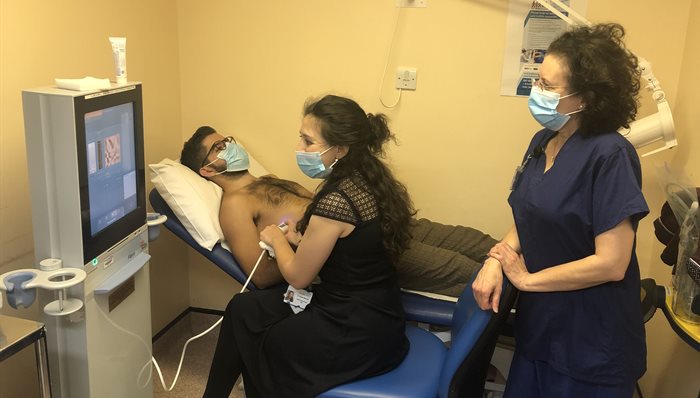How we are working with rough sleepers and people who use drugs to eliminate hepatitis C virus

According to data from the homeless charity Shelter (2021), Brighton and Hove has one of the highest rates of homelessness in the UK, after London and Luton. Homelessness exposes individuals to many vulnerabilities such as poor health, unemployment and depression. In addition, alcohol and drug dependence can be very high amongst rough sleepers, thus increasing their exposure to infectious diseases such as hepatitis C virus (HCV) and HIV.
Over the past decade, Professor Sumita Verma (view her profile here) and her team have reached out to these hard-to-reach, high-risk, populations to provide HCV treatment. HCV affects the liver and can lead to serious liver disease if left untreated.
A unique aspect of this research is that the team chose to work in the community setting unlike the traditional hospital- based care. They used a ‘one-stop’ care model that included screening of people who use drugs and homeless individuals at the Brighton Pavilion, one of the largest addiction centres. A community-based nurse offered treatment and a painless liver scan to assess for liver scarring. Addiction teams, peer mentors and social workers joined in to ensure effective care and delivery of service. The work gradually expanded into Arch Healthcare, the only surgery in Brighton and Hove, providing specialised healthcare to people experiencing homelessness or using hostel services.
The response to this community-based HCV service has been overwhelmingly positive. Patients really valued the personal, flexible, engaging, and non-judgemental approach, far more than going through hurdles to access care in hospitals. Cure rates have been comparable to hospital- based treatment. Deaths from hepatitis C virus related liver disease almost halved in Brighton, though other factors also contributed to this. This work also had a significant positive impact on the individual’s quality of life and understanding of their disease and their ability to access treatment. As a result, once the HCV was treated, many were able to address other issues in their lives such as their drug or alcohol use.
This research has changed the way patients, GPs, nurses, social workers perceive people who use drugs and rough sleepers and their associated health issues. The new HCV care model developed by Professor Verma and team has been rolled out in other UK centres, which shows the breadth and impact of their work. Their research-led interventions are playing a vital role in achieving the national goal of eliminating HCV by 2025; adoption of some of these interventions has enabled two of the largest HCV centres to achieve NHS England HCV elimination targets. Furthermore, Professor Verma has secured further funding from a leading international pharmaceutical company, Gilead Sciences to develop similar care models throughout East and West Sussex.
This study has shone a light on some of the health inequalities that exist in marginalised communities in the UK. The work of Professor Verma and team and translated into a positive treatment and care experience in the lives of those enduring drug use, homelessness, poverty and ill health.